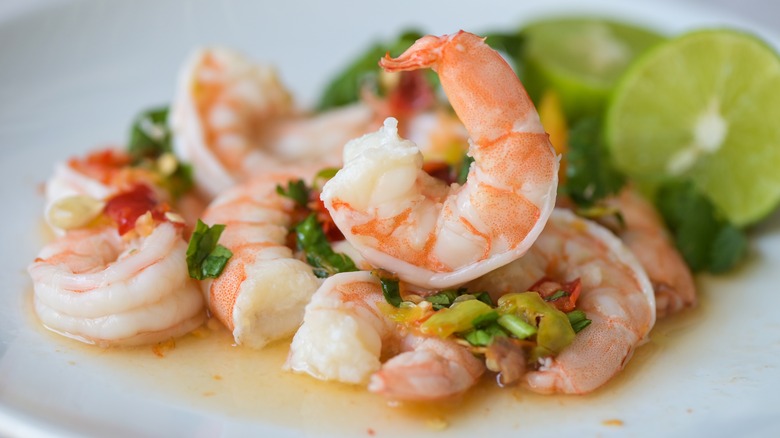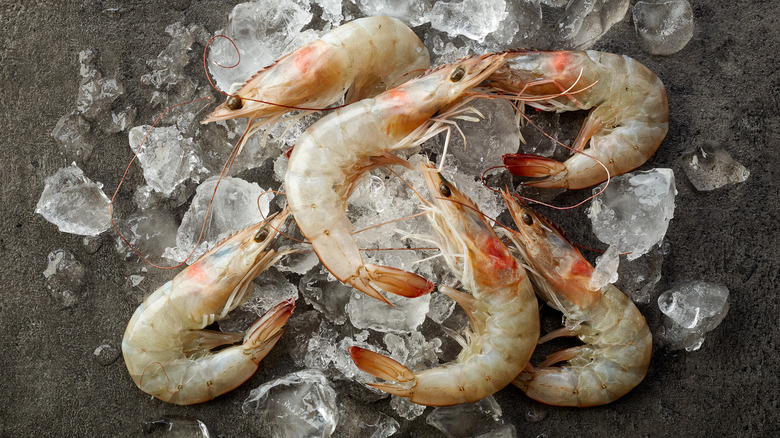The 2 Chemicals To Steer Clear Of With Packaged Shrimp
Chemicals, such as sodium bisulfite and sodium tripolyphosphate (STPP), may enhance the look of farmed and even wild-caught shrimp. However, there's clearly a price to pay in terms of health and budget.
Sodium bisulfite is added to shrimp to reduce discoloration in the shells. Sometimes, however, even a little sodium bisulfite can prompt an unwanted reaction in people sensitive to sulfites, according to Livestrong. Asthmatics appear to possess the strongest reaction to sulfites and may suffer consequences ranging from wheezing to full-on anaphylaxis shock, which can result in breathing issues, anxiety, and fainting. Other reactions include skin and gastrointestinal sensitivity. The FDA limits the amount of sulfite residue on shrimp to 100 parts per million for these reasons.
When added to peeled shrimp, STPP makes them look firmer and shinier. It also increases their weight by as much as 10%, making them more costly. This questionable chemical rinse can also cause them to be less healthy. Although deemed generally safe to use by the FDA in specified amounts, STPP affects certain people negatively, prompting allergic and/or respiratory reactions. STPP also adds phosphorous to one's diet, which can incite unwanted kidney and/or cardiovascular issues. This potential neurotoxin may also alter one's central nervous system and cause digestive problems when consumed in high quantities, according to the National Institute for Occupational Safety and Health (NIOSH), per Clean Food Facts.
Look before you cook
These days, it's hard to find shrimp that hasn't been treated with sodium bisulfite and/or sodium tripolyphosphate. Frozen shrimp, which accounts for the vast majority of shrimp sold in this country, is usually treated with both. Even so-called "fresh" shrimp are often simply defrosted. Fortunately, companies must label these ingredients on the bag. Look for domestic or wild-caught shrimp with only shrimp and water listed as ingredients. And remember to use your eyes — black ends on shrimp fins often signify no chemicals were added to beautify these sensational crustaceans.
Who cares how the shrimp look, anyway? What's important is that they taste sublime in your mouthwatering shrimp and scallop scampi or Kung Pao shrimp stir fry overflowing with colorful vegetables, Sichuan spices, and vermicelli rice noodles. Just make sure to leave out the sodium bisulfite and sodium tripolyphosphate in whatever shrimp you buy. Simply forgo the chemicals, cook, and enjoy.

